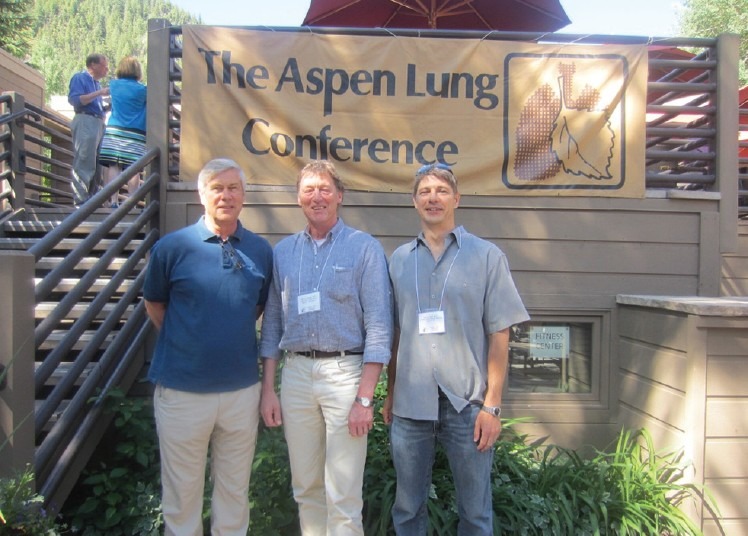The 55th annual Thomas L. Petty Aspen Lung Conference, “Mechanics and Mechanisms of Pulmonary Hypertension,” was held in June of 2012, as it is every year in beautiful Aspen, Colorado (Fig. 1). In developing this year's conference, we sought to emphasize the integration of basic, translational, and clinical science in what is arguably the most rapidly progressing field in pulmonary medicine. The more recent appreciation of the importance of the right ventricle (RV) and right ventricular-pulmonary arterial (RV-PA) interaction in patient outcomes also Required due diligence in the design of the program. We sought to highlight the dramatic strides being made in a variety of areas of pulmonary hypertension (PH) and capture the excitement surrounding these discoveries. We hoped to stimulate active discussion and debate among experts in a variety of areas of pulmonary vascular disease, and help to drive our understanding forward. Lastly, we wished to facilitate future collaborations that will advance the field. By all accounts, we believe this year's conference was a success.
Figure 1.

55th Annual Thomas L Petty Aspen Lung Conference co-chairs Dr. Kurt Stenmark (left), Dr. Todd Bull (right) and conference summarizer Dr. Werner Seeger, (center).
The conference itself provided an international forum for the best scientific and clinical minds in this field to exchange ideas, discuss, and sometimes argue about the cutting-edge data being presented. There was opportunity for junior members of the field to interact with senior and more established investigators and for new collaborations to begin among established laboratories.
The topics covered by the state-of-the-art speakers included a discussion of the developmental basis of pulmonary vascular development and physiology, the role of inflammation and infection in PH. The etiology of PH associated with chronic obstructive pulmonary disease and the role of the RV failure and RV-PA coupling in patient outcomes was also explored. Novel imaging strategies for assessing the pulmonary vasculature and right heart were discussed as was the role of mitochondrial metabolism and fatty acid oxidation in the development of PH. Our current understanding of the genetic and epigenetic contributions to PH and novel means of further unraveling this genetic contribution to disease were explored, as was the potential for induced pluripotent stem (IPS) cells to improve our understanding of pulmonary arterial hypertension. Finally, a consideration of novel potential therapeutic targets for the future treatment of PH concluded the conference. In addition to these state-of-the-art discussions, a wide variety of oral presentations and posters were presented.
The manuscripts contained in this issue of Pulmonary Circulation provide a forum for the speakers to highlight and expand upon many of the topics addressed at the 2012 meeting. We have also included the vast majority of the abstracts presented at the meeting, thus giving a more comprehensive overview of the work presented at this exciting meeting.
We hope we were able to meet the expectations of those in attendance and measure up to the high bar set by previous conference chairs. We believe this meeting will help in contributing to a roadmap for future investigative endeavors in PH.


